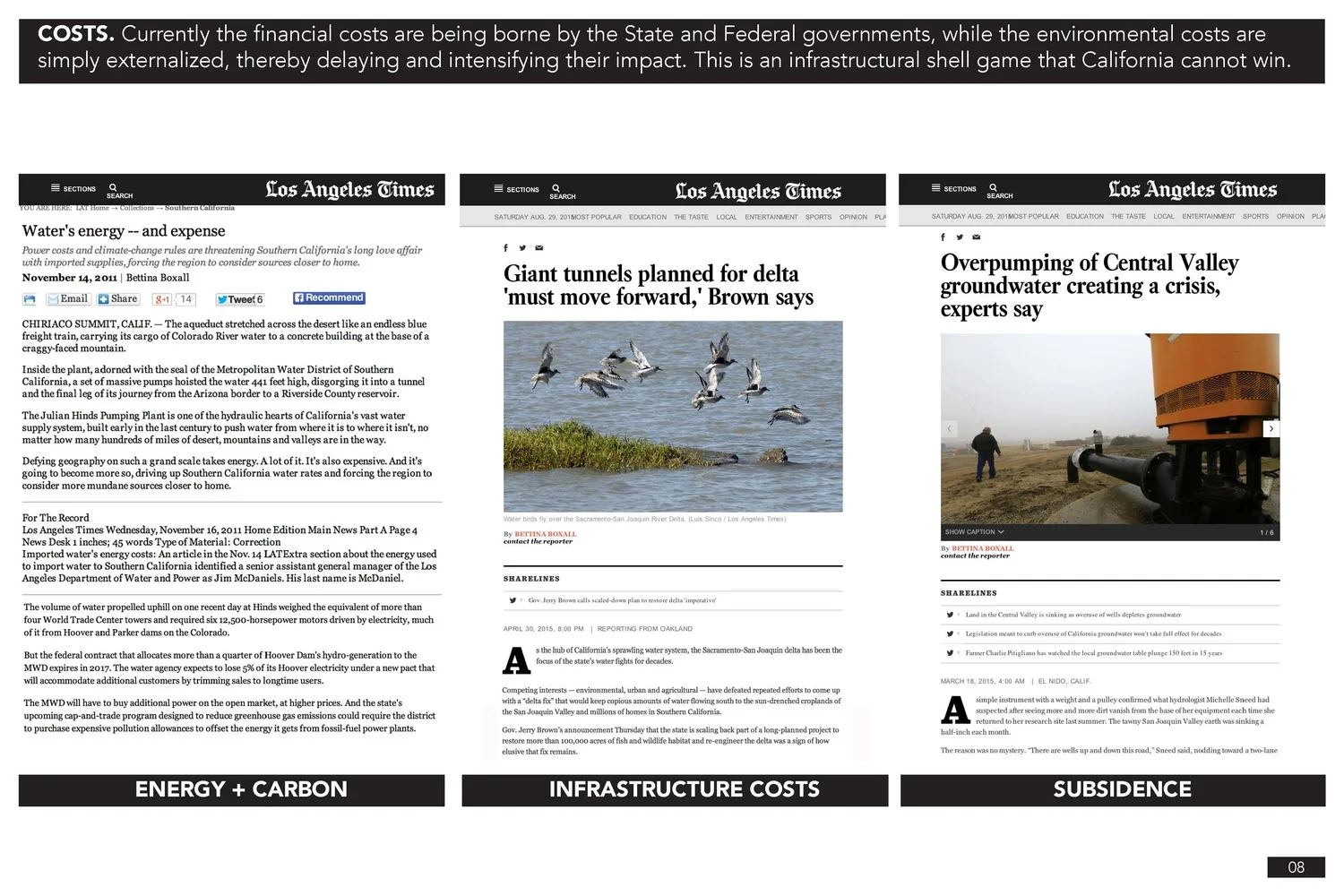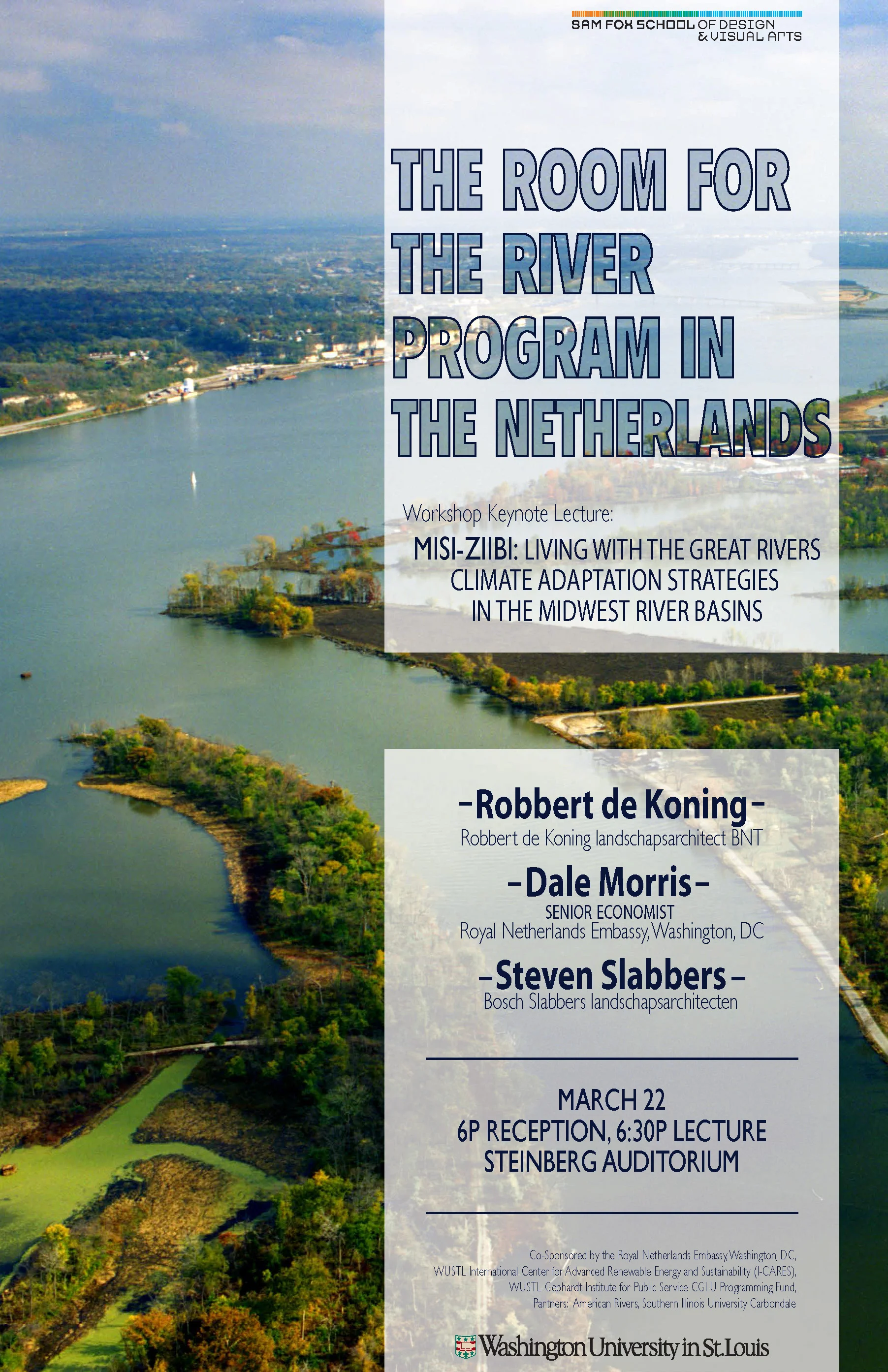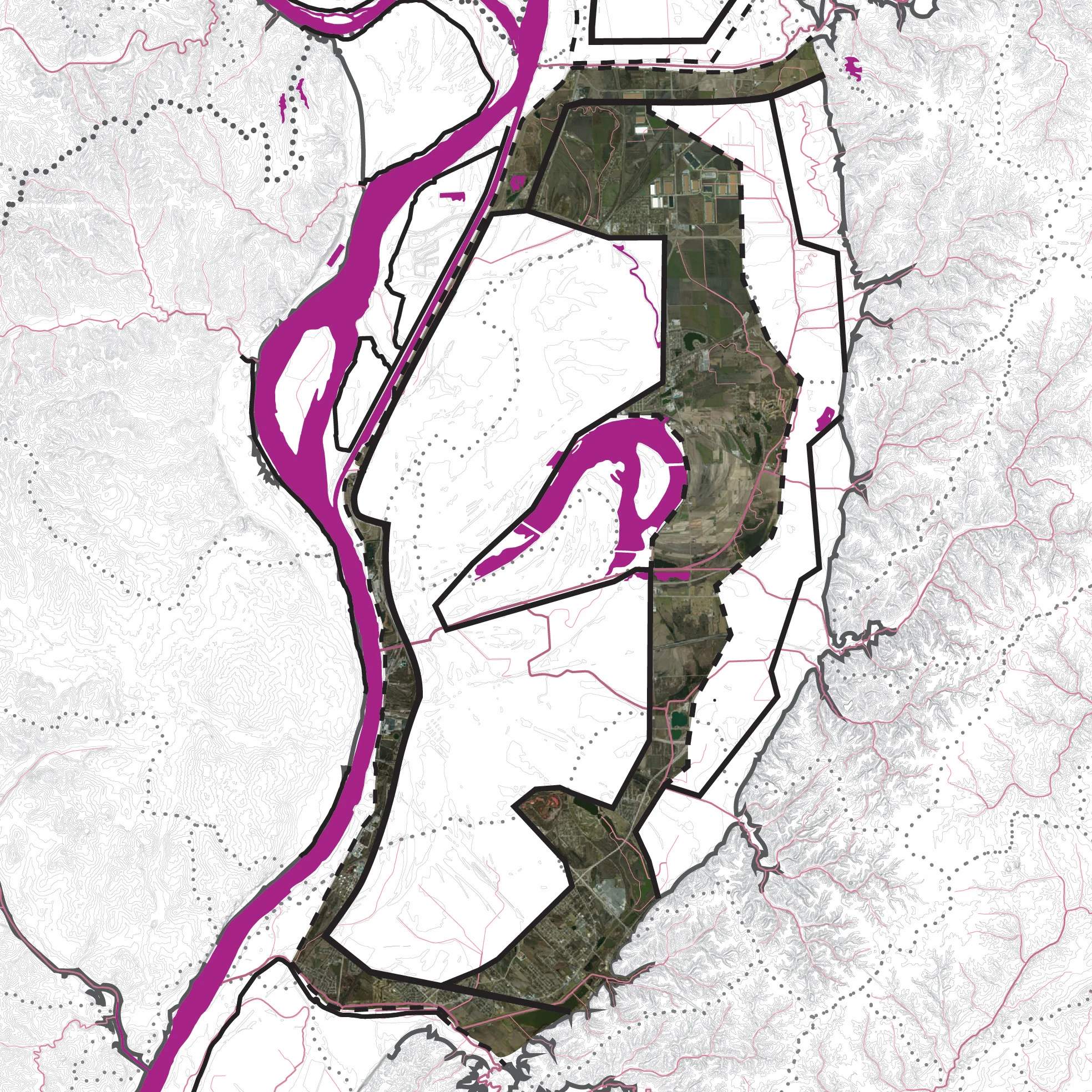Resiliency research
Competition - Dry Futures
Team: Derek Hoeferlin and Ian Caine (design leads), Emily Chen, Tiffin Thompson, Pablo Chavez
Honorable Mention
"California – and much of the Western United States – is currently in the midst of a severe and unprecedented water crisis... While the practice of architecture may have not traditionally taken the primary role in determining how water is used, today, we no longer have a choice."
Water is a commodity that we take for granted: we use fossil fuels to pump it out from deep under ground, transporting it across deserts in open aqueducts, and store it in open basins that allow large quantities to be lost to evaporation. These wasteful processes have costly and dangerous consequences: the central valley's water supply is quickly depleting, the amount of water flowing to the Gulf of California via the Colorado river has shrunk to a trickle, meanwhile farmers and large urban areas are demanding more and more of this diminishing resource.
Our team proposed a solution to the California water crisis by defining a new concept of urbanism called Hydro-Regions. We suggest that as water becomes more and more scare, populations with begin to migrate to areas where this resource is rich. Three types of hydro-regions could support growing communities: Dam, River, and Delta Urbanism. As people move towards these centers, water poor areas will shrink due to attrition.
View the whole submission here:
https://watershedarchitecture.squarespace.com/the-continental-compact
Misi-ziibi Great Rivers Workshop
In 2013, I participated in the "Misi-Ziibi: Living with the Great Rivers" workshop. Teams of students, faculty, local experts, and Dutch practitioners worked together to consider possible alternatives to address rising river levels, aging infrastructure, and land valuations within the at-risk region. My group focused on the American Bottom, the floodplain East of St. Louis.
Following the workshop, I worked as an I-CARES research assistant for Professors Derek Hoeferlin and John Hoal. I continued mapping and diagramming possible scenarios proposed in the Misi-Ziibi Workshop.
The diagrams to the left show three proposals--each with increasing required intervention--in order to address flooding within the American Bottom.







